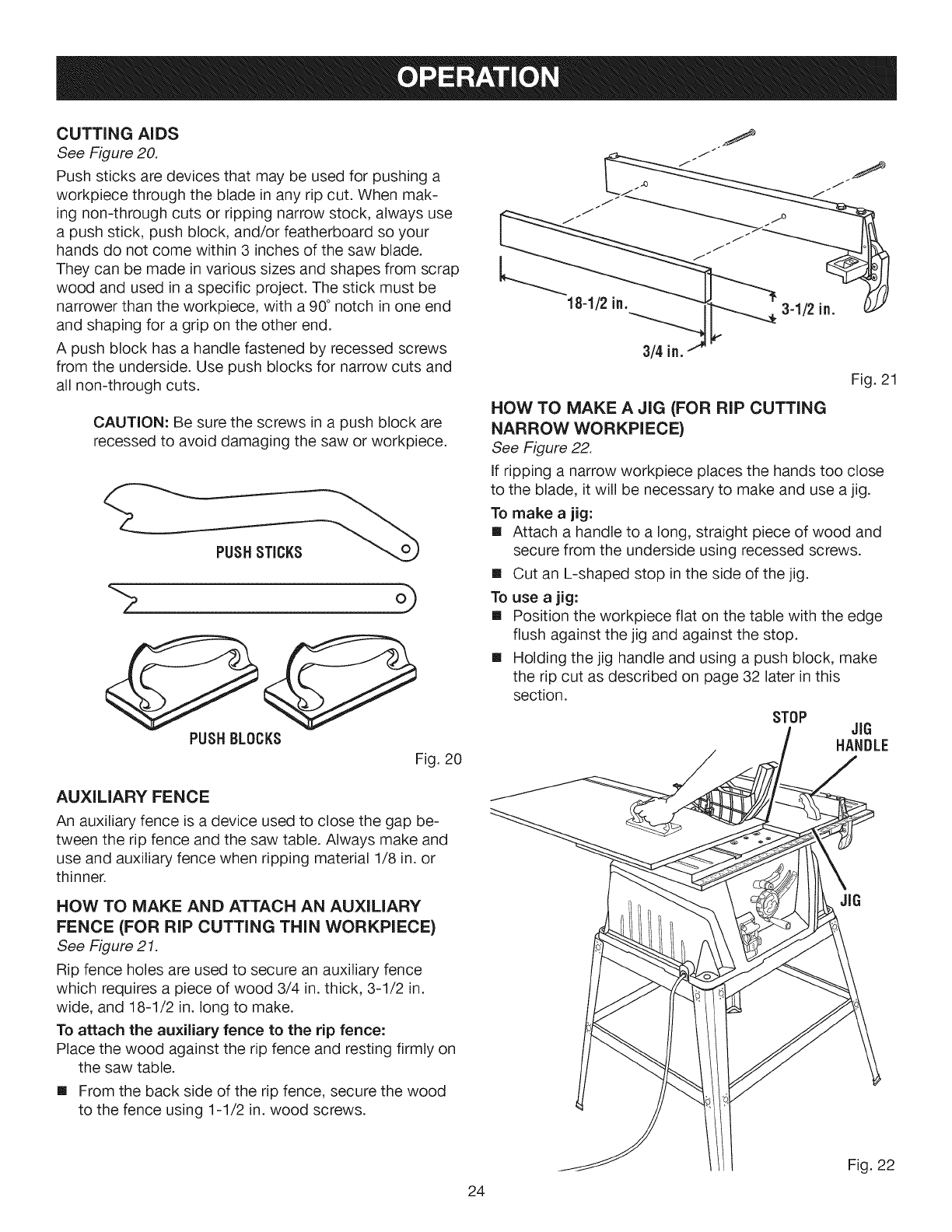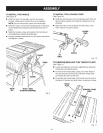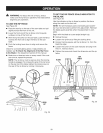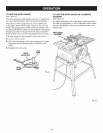
CUTTINGAIDS
See Figure 20.
Push sticks are devices that may be used for pushing a
workpiece through the blade in any rip cut. When mak-
ing non-through cuts or ripping narrow stock, always use
a push stick, push block, and/or featherboard so your
hands do not come within 3 inches of the saw blade.
They can be made in various sizes and shapes from scrap
wood and used in a specific project. The stick must be
narrower than the workpiece, with a 90° notch in one end
and shaping for a grip on the other end.
A push block has a handle fastened by recessed screws
from the underside. Use push blocks for narrow cuts and
all non-through cuts.
CAUTION: Be sure the screws in a push block are
recessed to avoid damaging the saw or workpiece.
PUSHBLOCKS
Fig. 20
AUXILIARY FENCE
An auxiliary fence is a device used to close the gap be-
tween the rip fence and the saw table. Always make and
use and auxiliary fence when ripping material 1/8 in. or
thinner.
HOW TO MAKE AND ATTACH AN AUXILIARY
FENCE (FOR RiP CUTTING THIN WORKPIECE)
See Figure 21.
Rip fence holes are used to secure an auxiliary fence
which requires a piece of wood 3/4 in. thick, 3-1/2 in.
wide, and 18-1/2 in. long to make.
To attach the auxiliary fence to the rip fence:
Place the wood against the rip fence and resting firmly on
the saw table.
[] From the back side of the rip fence, secure the wood
to the fence using 1-1/2 in. wood screws.
18-1/2 in.
3-1/2 in.
3/4 in.
Fig. 21
HOW TO MAKE A JIG (FOR RiP CUTTING
NARROW WORKPIECE)
See Figure 22.
If ripping a narrow workpiece places the hands too close
to the blade, it will be necessary to make and use a jig.
To make a jig:
[] Attach a handle to a long, straight piece of wood and
secure from the underside using recessed screws.
[] Cut an L-shaped stop in the side of the jig.
To use a jig:
[] Position the workpiece flat on the table with the edge
flush against the jig and against the stop.
[] Holding the jig handle and using a push block, make
the rip cut as described on page 32 later in this
section.
STOP
JIG
HANDLE
JIG
24
Fig. 22


















